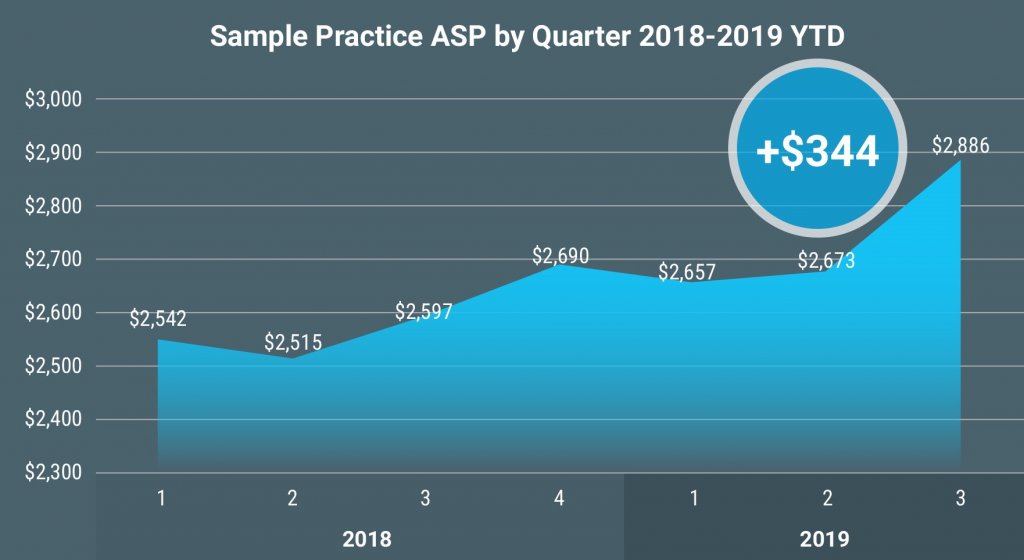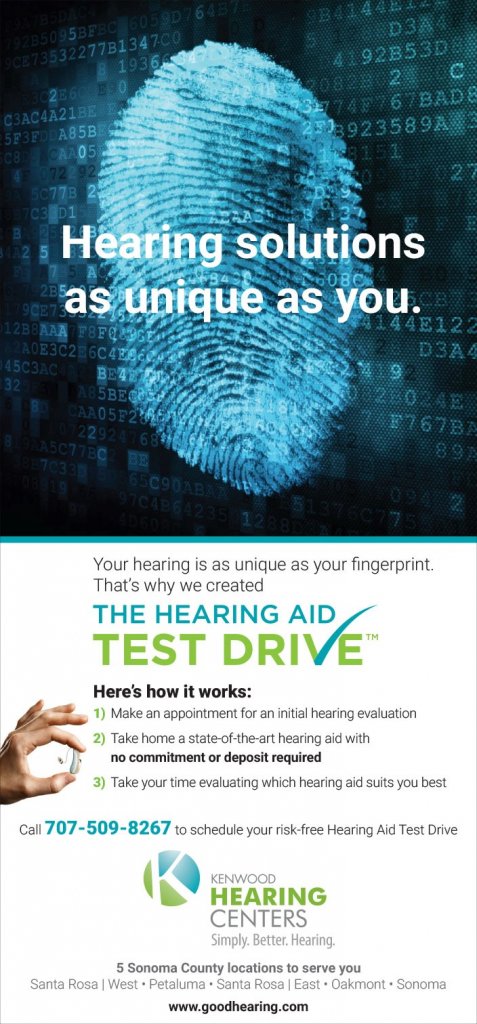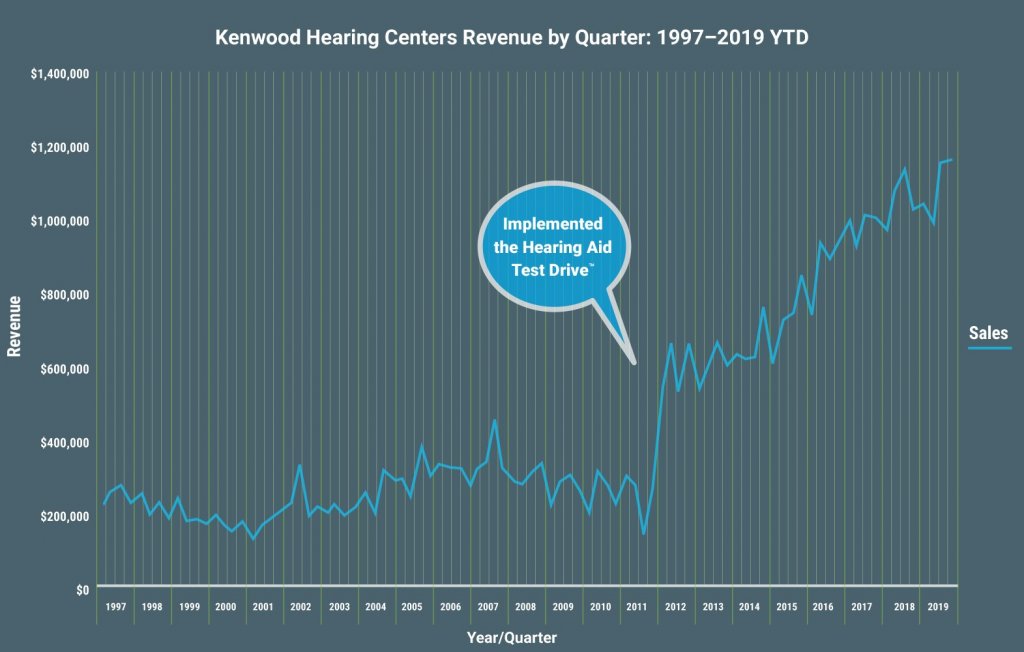A Proven Process to Increase Intakes, ASP, and Positive Patient Reviews
Advertorial
Do you think a “strong recommendation” is the way to go when presenting technology to your patients?
We invite you to think again. We’ve been told for years by practice development experts that we are the professionals and that we should offer a strong recommendation for a product after doing our diagnostic and lifestyle evaluation.
That method used to work just fine. But it doesn’t with the “new patient” that’s here – the Baby Boomers. Here are some things to consider in light of this new generation of patients:
- Today’s patients are more active, and to meet their needs, we must demonstrate effectiveness during all their activities
- Baby Boomers do not recognize medical authority as the previous generation did, and to make a purchase decision, they need to experience the hearing solution and know they have done their due diligence
- There are reasons that those with hearing loss wait an average of 7 years to address their disability – one of them is that they are concerned if they go somewhere that sells hearing aids, they will be hard-sold something very expensive that may not be the best product for them
- The marketplace is more cluttered, noisy, and competitive than ever – practices must differentiate themselves in a clear compelling way to stand out and attract new patients. This differentiation should focus on private practice independence and communicate how this leads to the best possible hearing solution for each and every patient.
- There is proven value for, and preference of shared decision-making in healthcare for Baby Boomers.*
We’ve been talking about the Baby Boomers and their arrival into the hearing care market for decades and wondering what it would be like, and now we know.
Can you recall a recent appointment where you came forward with a strong recommendation to a new patient only to have them say, “I’m going to think about it” / “talk to my spouse” / “do some research” and never return? Do you suspect that they took your strong recommendation to Google and quickly found internet retailers offering hearing aids at a fraction of your price?
We must approach the new patient differently. And that means change for us as clinicians and business owners – we must be willing to think differently about how we market, how we consult, how we demo, how we sell, and how we run our practices. That’s what the Hearing Aid Test Drive™ is all about.

The Hearing Aid Test Drive is a unique whole-practice approach that influences the way you market to prospective patients, communicate your practice value proposition, counsel, fit, and run your business. It goes far beyond a standard 2-week trial and even typical in-office demos.
The Hearing Aid Test Drive:
- Establishes a process to choose the optimal hearing aid for a patient’s loss, lifestyle, and unique brain – not just a good one
- Sets the expectation that the patient is in control of the process – a complete turnaround from the way most practices counsel and fit today
- Ensure no obligation or risk for the patient until he or she agrees that the hearing improvement is a good value
- Promotes independence and the ability to fit several leading brands of hearing aids
Positions the provider as a skilled clinical professional there to guide the patient on their journey to deciding which product is right for them
The Hearing Aid Test Drive process looks something like this in application:
- As soon as the hearing test is complete, the patient is brought into the fitting room and their loss is shown and explained to them. The provider immediately asks if the patient has a few minutes to try some hearing aids right then and there while they discuss the loss and implications.
- Once the patient is fit with hearing aids, the remainder of the counseling session ensues, including (but not limited to) a review of the audiometric results, a review of ear anatomy, an explanation of how hearing loss works, the correlation between hearing loss and cognitive decline, and the multitude of solutions available that can cause confusion.
- To address the plethora of choices, the provider explains the practice’s unique Hearing Aid Test Drive process. The provider reinforces the no-risk, no-obligation, no-hassle nature of the process where a patient is able to try different brands and technology levels in their own environment during a comfortable time period to determine which, if any, hearing aid is right for them. No money is collected when the patient leaves the office with hearing devices.
- The patient is scheduled for a follow up after 1 week. At that appointment, the provider gathers objective data from device-logging as well as subjective feedback from the patient. Based on that data, provider recommends a 2nd brand or technology level to try for another week. This process repeats until the patient is satisfied – on average 2–3 devices are tried before a purchase decision is made. Verification should be completed according to your practice protocols.
We like to say it’s a series of small yes’s (“Do you have time to try hearing aid today?” “ Would you like to take these home for a week?”) rather than the big yes (“Are you ready to spend $6500 on these?”).
The Hearing Aid Test Drive offers several differentiating benefits to the business:
- Prospect retention: You are much less likely to lose a patient to a competitor when they leave your office the same day wearing hearing aids that they haven’t paid for.
- Unique marketing message: The Hearing Aid Test Drive message has been proven to resonate with consumers and drive high quality patient intakes.
- Increased ASP: Most practices that implement the Hearing Aid Test Drive see a lift in ASP as patients self-select into higher levels of technology.
- Cash flow improvements: When you have lots of demos in a variety of technology levels from a number of leading manufacturers, you don’t have aging invoices to worry about during this process, which makes it as stress free for you as it is for the patient.
- Reviews and referrals: The Hearing Aid Test Drive is such a positive experience for patients that you’ll see mention of it in the reviews and referrals you get from your patients both online and in person.

The Hearing Aid Test Drive also delivers significant patient care benefits:
- Wow effect: Patients are often very pleasantly surprised that they are going to leave hearing better the same day with no money or credit card deposit on their part.
- Empowering the patient: The Hearing Aid Test Drive puts the patient in the driver’s seat and in control of the process (with your expert clinical guidance along the way).
- Trust and rapport: The fact that you are willing to send the patient home with devices they haven’t paid for builds instant trust and credibility.
A process like this is often a departure from the way a practice has been operating. Implementing this process requires some adjustments within the practice, all of which can be supported by Pivot Hearing:
- Practice financials, inventory control, office procedures, patient follow-ups, and manufacturer relationships are all reshaped to accommodate the Hearing Aid Test Drive
- Training and communication of the protocol is required for EVERY member of the practice staff
- The Hearing Aid Test Drive becomes the central communication of your private practice value proposition
- The Hearing Aid Test Drive becomes the central communication of your marketing messages and online presence

There are dozens of practices across the U.S. and Canada who have successfully adopted the Hearing Aid Test Drive. Look at this data from one practice who started using this method in 2012:

The Hearing Aid Test Drive will revolutionize the way you do business and make you more successful and profitable. And it may even reinvigorate your passion for what you do.
Interested in seeing if The Hearing Aid Test Drive process is right for your practice? Schedule a Complimentary Practice Assessment to find out by visiting pivothearing.com/caa

